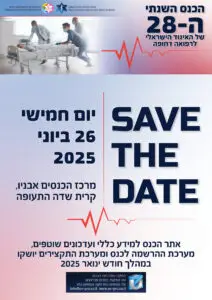פוסט זה זמין גם ב:
English
עברית
February 8, 2024
Written by Aaron Lacy
A panel of experts appraising a systematic review on prehospital airway management created 22 recommendations relating to ventilation (BVM vs SGA vs ETI), video laryngoscopy (VL), and drug-assisted airway management.
Prehospital airway management, surely no controversy here?
EMS experts utilized GRADE methodology to make recommendations from a systematic review we covered back in 2021. The focus was on ventilation methods, VL, and drug-assisted airway management.
Notably, the authors were not able to make recommendations due to insufficient evidence in some cases, and all recommendations were conditional, based on very low or low to moderate certainty of evidence. Let’s hit the highlights.
Bag Valve Mask (BVM) vs Supraglottic airway (SGA) vs Endotracheal Intubation (ETI)
- In adults with out of hospital cardiac arrest (OHCA), trauma, or a medical emergency, BVM is the starting point, and SGA should be considered as a primary invasive airway modality
- Agencies with established high-quality performance during ETI and continuous training and QI can consider implementing ETI as part of airway protocols.
- In pediatric patients with OHCA, trauma, or a medical emergency ETI should occur rarely, as the procedure is one of low frequency.
- Start with BVM and progress to SGA if needed.
Drug-Assisted Airway Management
- If an agency allows for ETI, drug-assisted airway management (i.e. RSI) should be considered, preferably with both sedative and paralytic.
- As above, drug-assisted airway management should only be bundled with ETI if there is continuous education and QI.
Video Laryngoscopy
- When performing ETI, agencies and proceduralists should use the laryngoscopy technique with which they are most familiar and successful.
- VL is increasingly common, and proceduralists should understand tube delivery techniques that may differ from DL, particularly if using a hyperangulated device.
How will this change my practice?
While this may not change my immediate practice, working in the ED I feel the downstream effects of local EMS policy, so a working understanding of current prehospital protocols is important. The common theme here is continuous education, oversight, and QI. I don’t oversee any prehospital operators but worked for several years in a prehospital critical care transport group that required frequent high-fidelity airway management review and skill sessions. This is expensive and resource intensive but allowed our crew to have freedom of choice in airway management. The authors suggest, and I agree, if agencies are unable to invest in training, education, and QI for ETI, emphasis on airway adjuncts, such SGA use, is probably best.
Source
Evidence-Based Guideline for Prehospital Airway Management. Prehosp Emerg Care. 2023. Dec 22. Doi: 10.1080/10903127.2023.2281363. Online ahead of print.








